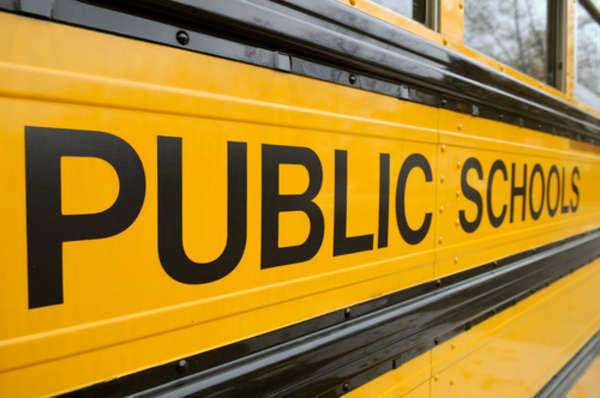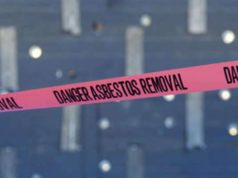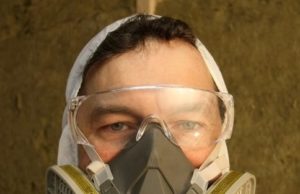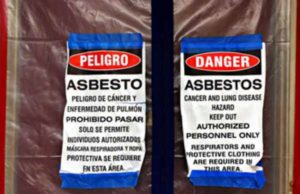
Asbestos-Containing Materials in Schools
The possible presence of asbestos containing materials in schools is of particular worry as many school buildings were built in the era of the asbestos construction boom. Most buildings built in the 20th century prior to a ban on asbestos containing construction materials in 1979. Still, the ban was limited enough to allow existing asbestos materials to be used up in new constructions. The EPA is tasked with providing for the safety of children in schools through enforcing mandates for air quality testing after abatement projects, strict regulations for asbestos abatement in schools and maintains emergency protocol in the event of visible emissions or other dangerous situations.
What legislative provisions define asbestos procedure in schools?
The Asbestos Hazard Emergency Response Act is a 1986 law that provided for the inspection of schools for asbestos materials and requiring the development of an asbestos management program for schools. AHERA covers both public and private schools, including schools with religious affiliations. Specifically, Chapter 40, Part 763, Subpart E defines all the provisions that schools must follow to protect students from asbestos.
Compliance
Schools must comply with both AHERA regulations protecting schools and Asbestos National Emissions Standards for Hazardous Air Pollutants standards for proper asbestos abatement during renovations and demolitions. Local education agencies have the primary role in ensuring compliance with these regulations and ensuring that proper testing and procedure is followed, especially when aging school buildings undergo repair. Even small scale abatement and repair should be conscious of asbestos regulations and provide adequate protection to maintenance staff to prevent the inhalation of fibers. Additionally, any about of asbestos, no matter how small, should be wetted, scraped and double bagged, as per AHERA and NESHAP regulations.
According to AHERA, schools must evaluate known asbestos containing materials in the school every six months. This includes testing the air quality for the presence of asbestos fibers after construction projects. Specialist contractors, plan writers, inspectors and workers will also be certified to work in schools and perform abatement to protect students and staff from unnecessary exposure.
Where asbestos might be found in schools
Insulated pipes remain one of the biggest threats for friable asbestos exposure. Asbestos pipe covering are prone to breaking apart and when this occurs, microfibers will fill enclosed areas, creating a toxic environment. Maintenance workers in particular art susceptible to being sickened from these poorly ventilated environments. Many school heating and water systems will feature this type of piping and abatement would need to be carried out immediately. In one, school, teachers that had to pass through the maintenance area to leave the building eventually developed respiratory illnesses.
All renovation work in schools brings the risk of potential asbestos contamination, via friable materials in the wall. Even non-friable materials, such as concrete can be pulverized and dispersed, presenting a serious health hazard. All in the school building would be in danger of illness if renovation sites are not adequately sealed and proper abatement, as per an asbestos management plan, is not followed.
What is the current status of asbestos in schools?
The EPA considers current asbestos in schools as “managed-in-place,” noting its potential danger, but stress that hazards can be controlled with effective asbestos management programs and proper safety and emergency precautions. Non-friable asbestos is not removed as it is not a threat to any occupant in the building. This is consistent with EPA and other policy related to non-friable asbestos. Friable asbestos however, is removed at the earliest opportunity.
Asbestos management plans in schools
Asbestos management plans are required of every school under the AHERA. This includes records of asbestos related activity at the school, an accounting for all asbestos materials within the school and efforts to deal with that dangerous material. The “asbestos management plans” are created and maintained by the “local education authority,” which can be a school district, parish or charter organization.
The records comprising the asbestos management plan must include:
– A listing of each school, the presence of asbestos at the school and the type of asbestos
– Date of initial asbestos inspection and plans to re-inspect the school
– Blueprints of each property, designated the location of the asbestos material
– A detail emergency response, should asbestos materials become exposed
– Analysis of potentially friable asbestos material, if applicable
– Steps taken to keep staff, parents and workers informed on the presence of asbestos and ongoing actions to manage asbestos materials in the school. All must be routinely informed whenever a major asbestos abatement or maintenance project potentially involving asbestos.
All staff, parents and other employees reserve the right to view the asbestos management plan at any time and the school is responsible to make that plan available without a reasonable amount of time. there is one person in every school that is appointed by the local education authority.
The asbestos plan is updated every six months after a re-observation period. Inspections must be conducted every three years with the plan revaluated at that time. Records will be kept on notifications and accessibility of the management plan to parents and staff.
What schools must follow asbestos management plans?
All schools must comply with this management pan unless the building’s architect can certify in writing that no asbestos materials were used in the building. Obviously, this is applicable only to the newest of buildings.
Enforcement
The EPA will enforce the AHERA provisions on schools in all states except: Connecticut, Colorado, Louisiana, Massachusetts, Maine, Oklahoma, Rhode Island, Texas, and Utah. These states will have their own agencies to deal with asbestos in the schools, but will follow the AHERA mandates.


























